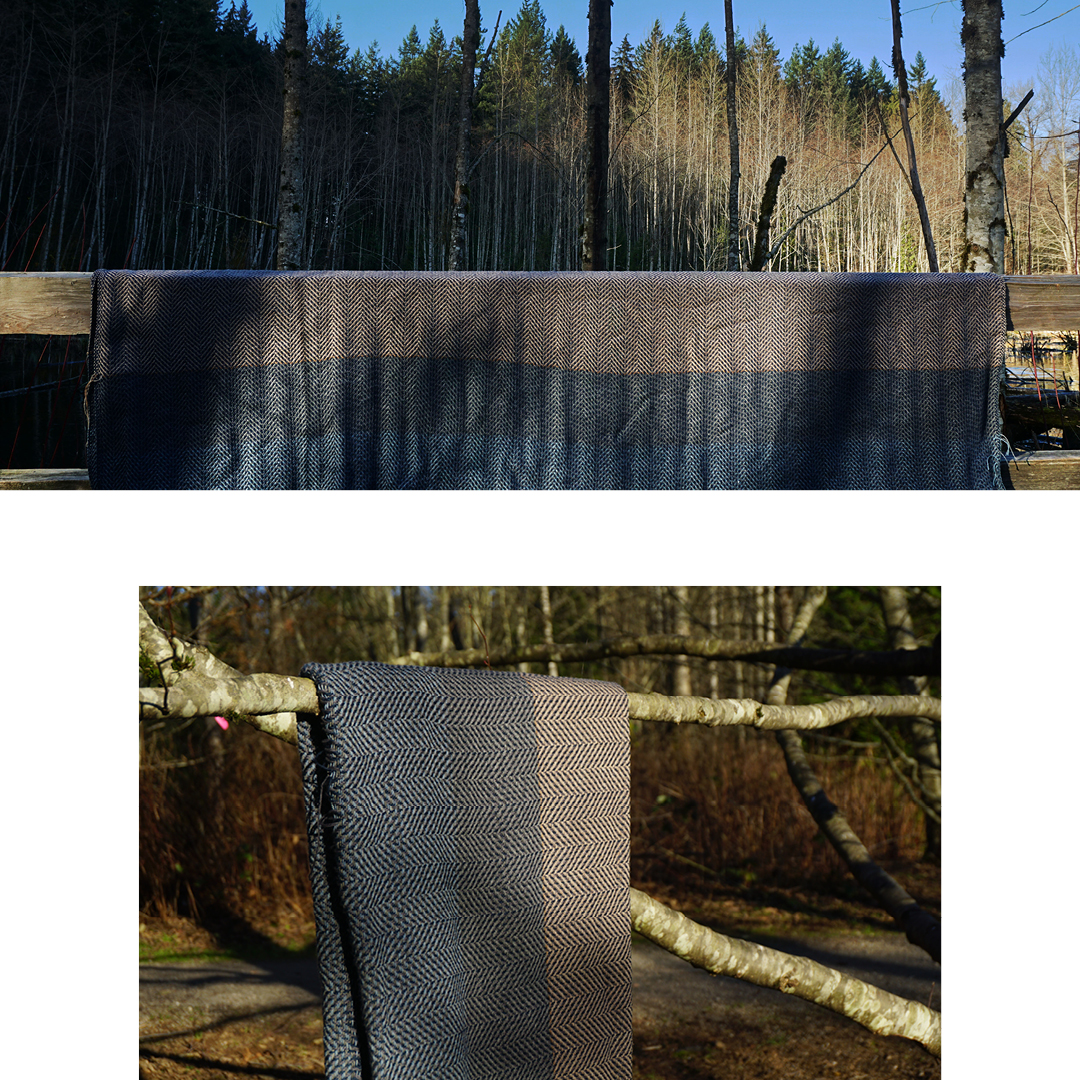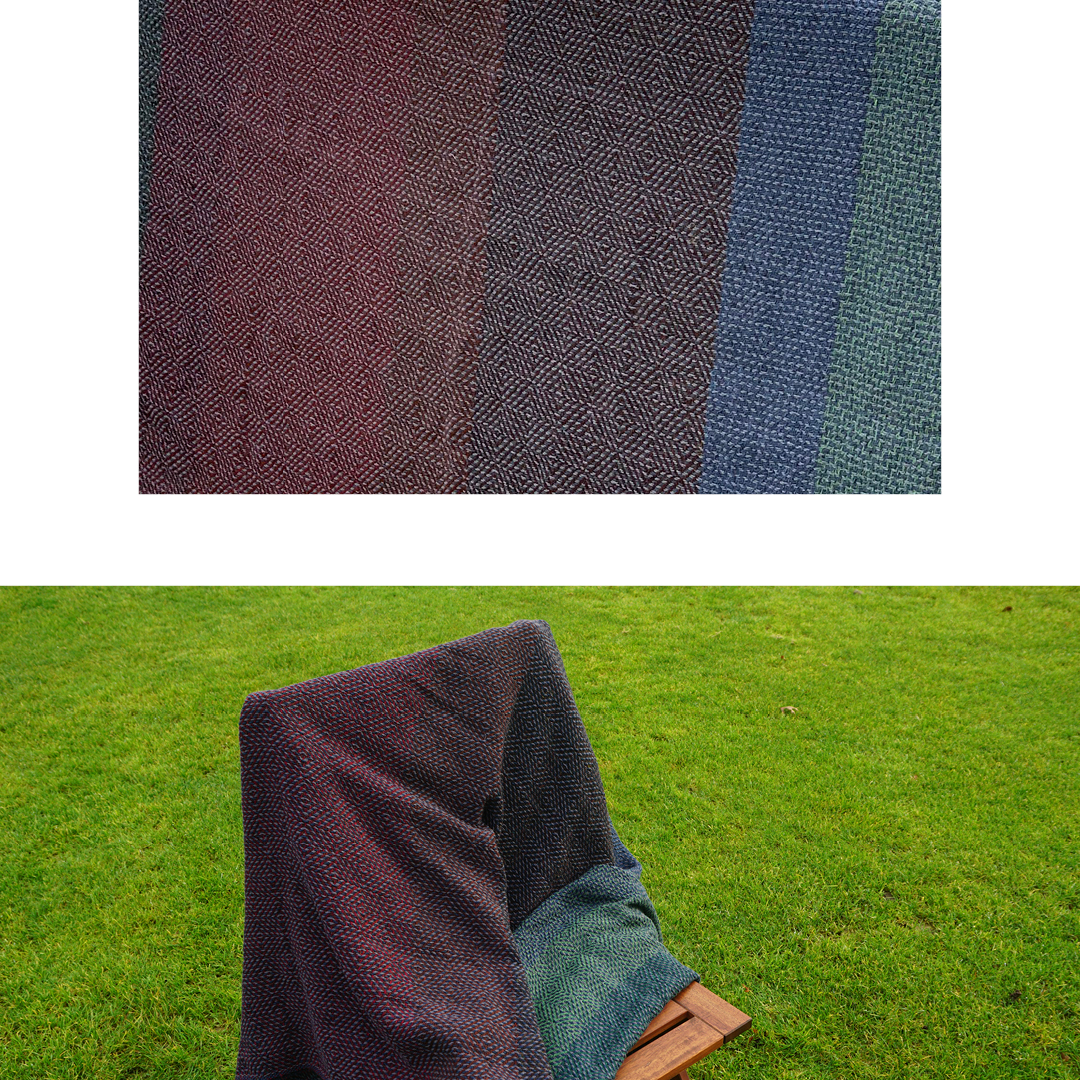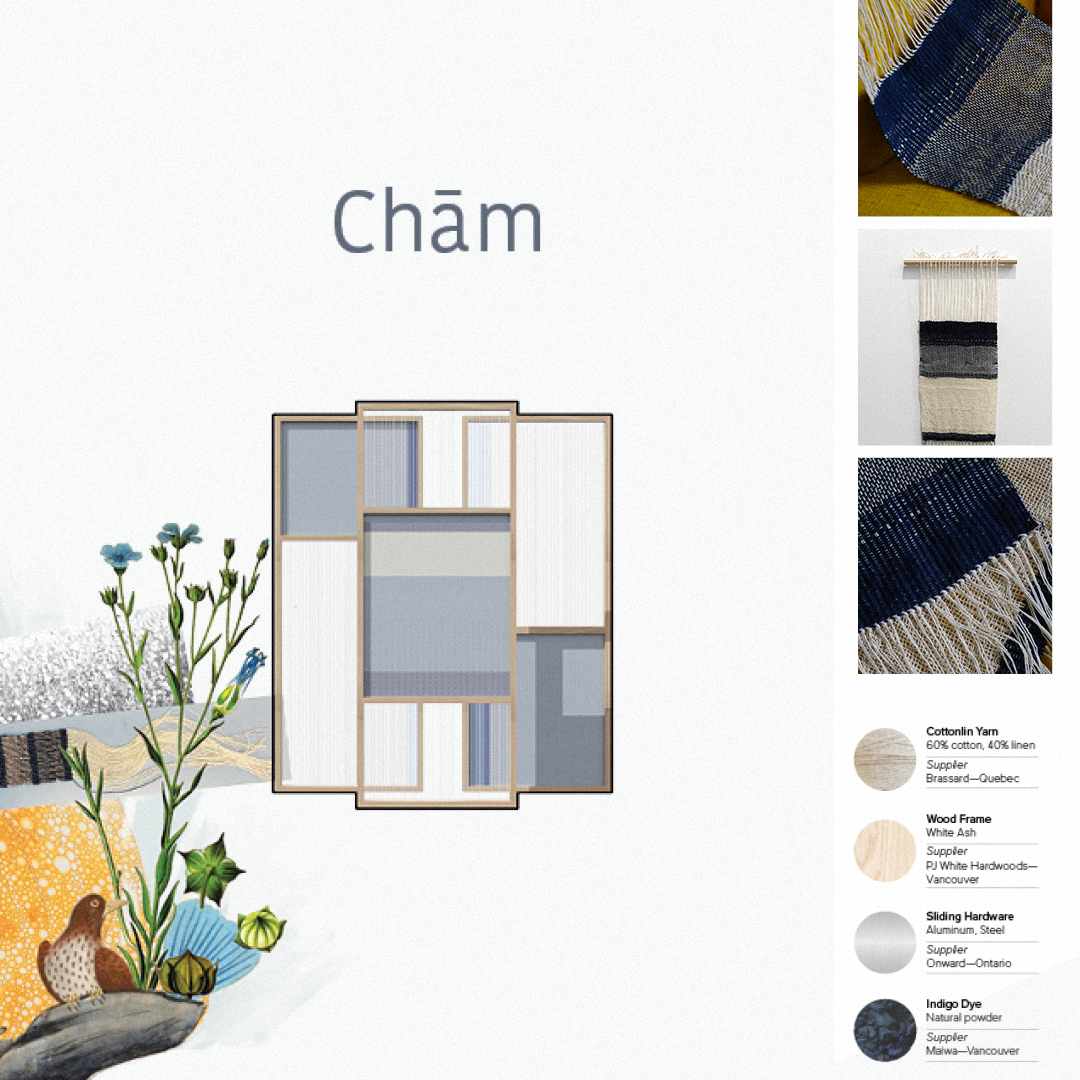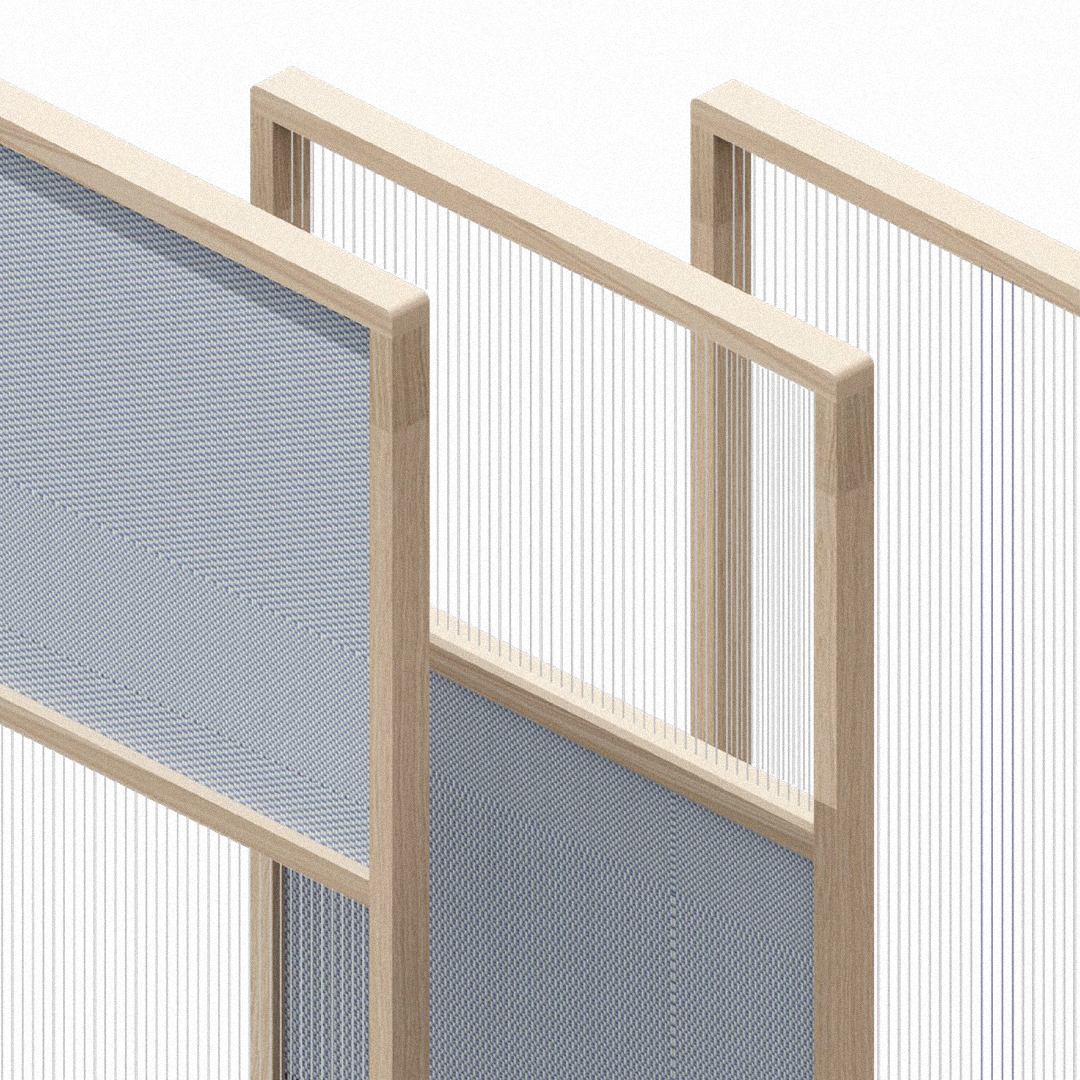Tuyen Hoang Shares the Colours of the Land Both Here and There
By Nicole Yamamoto
When Tuyen Hoang, Industrial Designer (BDes 2021) was tasked with creating her own ‘Dream Cloth’ design during Fibreshed Field School, she had several factors to contemplate. Tuyen was part of the program’s Warping and Weaving cohort, which explored transparent practices around textile production with the goal of learning how to fabricate sustainable and affordable garments and other soft goods. After going through the process of designing and weaving two blankets with help from cohort mentors Nicola Hodges and Macgee Cloth Company (as well as using a massive industrial loom for the first time), the possibilities for this final assignment were endless.
Fibreshed Field School encouraged its participants to investigate their relationship to the lands they’ve lived on. Describing her experience in the program, Tuyen says that the field school “was an opportunity to freely discover the stories of my own [Vietnamese] culture.” For her blanket assignments, Tuyen took a deep dive into the colours of the landscapes, stories and people both in Vancouver and in Vietnam. The final results were two distinct blankets representing a place of presence: Here, and a place in mind: There. Illustrating the great blue herons of Vancouver’s waters, the Here blanket symbolizes the body of a heron through contrasting V-shaped patterns. A refreshing Vietnam revealed itself in Tuyen’s second blanket about There, where the red soil, lush green forests, and bright red terraces of the country made its presence in the colours of the wool. For this blanket, she took inspiration from the secluded ethnic tribes of Vietnam, such as the Hmong tribe, who utilize diamond shaped motifs and patterns within their clothing to depict the natural world and its creatures.


Blankets representing a place of presence: Here, representing Vancouver, in the top two photographs and a place in mind, There, representing Vietnam in the bottom two photographs. Images courtesy of Tuyen Hoang
The final assignment of her cohort was the conceptualization of her ‘Dream Cloth’. For this assignment, Tuyen wanted to speak to the slow and steady process of natural dye traditions, which produce colours that “intimately speak of the land, what grows from it, and how the people harmonize with their lands.” She describes this momentary beauty of colours in between dye stages as the gradual motivation behind her idea—as these colours fade with time, translucency and transitioning begin to flourish. The culmination was a design concept she titled Chām. Originating from the Vietnamese word chàm meaning indigo, the title hints at the process of obtaining Indigo pigment. Retrieved from a variety of plants, indigo can produce up to eight unique shades that can only be achieved through the laborious stages of natural dying. Chām represents this tonal range of naturally dyed cloth through the incorporation of 3 sliding partition doors. Her design exhibits panels constructed from wooden frames that are crafted to fit within a standard condo sized living area. The layers of transparency and translucency created through the element of sliding doors implements the notion of fading of natural dyes over time into the space.


2D and 3D conceptualizations of Chām, courtesy Tuyen Huang.
Tackling the wicked problems of the textile industry isn’t always easy, quick, or affordable. “[For my prototype], I had hoped to propose locally sourced Canadian linen from Nova Scotia for my ‘Dream Cloth’. However, midway through the project, I found out that was impossible,” Tuyen discloses. “There was a steep learning curve in learning how to weave by hand [as opposed to using an industrial loom] and the capacity required of the fibres to hold a weave.” The majority of her process was informed by her own research; which she states was aided by warm, generous individuals within the British Columbia textile circle and beyond, to whom she reached out to through the Fibreshed program.
That love and care was apparent within the three Fibreshed Field School cohorts as well, where participants were given a space that welcomed the sharing of thoughts, feelings, and ideas. “Because we were such a small group, awkward pauses quickly became comfortable,” Tuyen says. “There was a rhythm from hands moving, and the pace and pauses we gave each other felt like moving together.”
Tuyen is currently working on her graduation project, titled Veins, which gives a second life to old, discarded fabrics in the form of a furniture piece. Although she is busy, she has many passion projects under her belt as well as further textile explorations including felting and embroidering, that she hopes to do more of in the future. Reflecting back on her own design practice after participating in Fibreshed Field School, “I find tremendous joy and focus in creating, which helps to overcome my imposter syndrome,” Tuyen says. “Looking back at my roots helped make that process a little easier. Decolonizing design happens as I find ways to interpret, play with, and take inspiration from the stories of my culture into my design narrative.”
